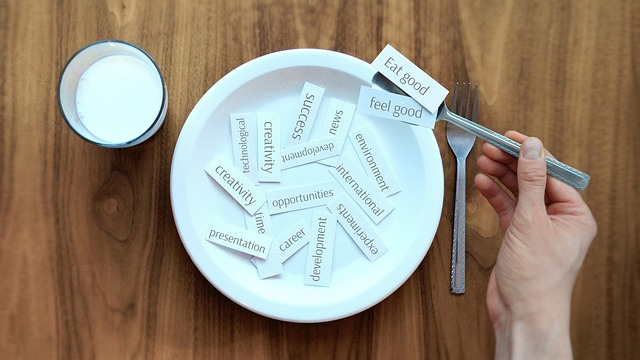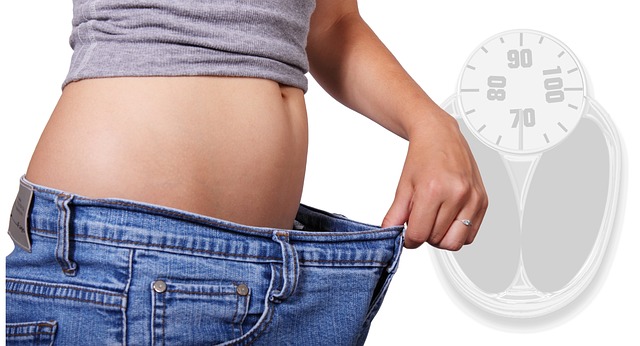In today’s world, the quest for the perfect diet seems never-ending. With countless options available, it can be overwhelming to determine which one is truly the best for overall health and weight management.
Two popular dieting methods, Intermittent Fasting (IF) and the Atkins diet, have gained immense popularity in recent years. Both claim to offer significant health benefits beyond just weight loss. But when it comes down to choosing between the two, how do you choose?
Can we combine the two to get the benefits of both? Wouldn’t it be great if you could do this?
This article will explore the potential of combining Intermittent Fasting and the Atkins diet, highlighting their health benefits and how they may complement each other.
Intermittent Fasting: The Science Behind the Method

Intermittent Fasting, characterized by designated fasting and eating windows, has been praised for its simplicity and effectiveness in promoting weight loss and enhancing metabolic health.
Here are the most popular methods of Intermittent Fasting:
- 16:8 Method: Fast for 16 hours and eat during an 8-hour window.
- 5:2 Diet: Eat normally 5 days a week and reduce calorie intake to about 500-600 calories on 2 non-consecutive days.
- Eat-Stop-Eat: Fast for 24 hours once or twice a week.
- Alternate-Day Fasting: Alternate between eating normally and fasting days or eating very few calories.
To learn more about the different methods, check out this article.
Advocates of IF often cite its ability to regulate blood sugar levels, improve insulin sensitivity, boost cognitive function, and facilitate fat loss as some of its key benefits.
Here are some of the good things about Intermittent Fasting(IF):

- IF can be an effective tool for weight management. Limiting the eating window and reducing overall calorie intake can help reduce body weight and fat. Additionally, fasting periods can enhance fat burning by lowering insulin levels and increasing norepinephrine, which helps mobilize fat stores.
- IF can improve several markers of metabolic health, including insulin sensitivity and blood sugar levels. This can reduce the risk of type 2 diabetes and other metabolic disorders.
- During fasting, the body initiates processes such as autophagy. This is a natural, regulated mechanism of the cell that removes damaged components and recycles them. This can promote cellular repair and maintenance, potentially reducing the risk of chronic diseases.
- Unlike many diets, intermittent fasting focuses on when to eat rather than what to eat. This individualized approach can empower you to make dietary choices that suit your lifestyle and preferences, reducing the stress of calorie counting and meal preparation.
- Giving the digestive system regular breaks can enhance digestion and reduce the risk of gastrointestinal issues. Some people report better digestion and fewer digestive problems when following an IF regimen.
Intermittent Fasting offers flexibility in terms of meal timing and can be easily integrated into different routines, which is one of the biggest reasons for its popularity.
Here at FastFitLove, we are advocating for Intermittent Fasting. If you want to learn more, you can start here.
The Atkins Diet: Embracing Low Carbohydrate Principles

Contrary to traditional notions that demonize fats, the Atkins diet emphasizes restricting carbohydrates while prioritizing the consumption of fats and proteins.
One key principle of the Atkins diet is to limit carbohydrate intake. This forces the body into a state called ketosis, where it burns fat for energy instead of relying on glucose from carbohydrates. This shift in metabolism is believed to promote rapid weight loss and improved energy levels.
The Atkins diet is divided into four main phases, each with its specific guidelines and objectives. The initial phase, the Induction Phase, is the most restrictive regarding carbohydrate consumption. This is followed by the Balancing Phase, the Pre-Maintenance Phase, and the Lifetime Maintenance Phase.
Here are the main phases of the Atkins Diet:
- Induction Phase:
- Duration: At least 2 weeks.
- Carb Intake: Limited to 20 grams of net carbs per day.
- Focus: High-fat, high-protein foods with low-carb vegetables (like leafy greens).
- Purpose: To kickstart weight loss by shifting the body into ketosis, which burns fat for fuel instead of carbohydrates.
- Balancing Phase:
- Duration: Until you are 10 pounds away from your goal weight.
- Carb Intake: Gradually increase by 5 grams per week, focusing on nutrient-dense, low-carb vegetables, nuts, and small amounts of berries.
- Purpose: To find the critical carbohydrate level for losing weight (CCLLW) where you continue to lose weight.
- Pre-Maintenance Phase:
- Duration: Until you reach your goal weight.
- Carb Intake: Increase by 10 grams per week.
- Purpose: To slow down weight loss and find the critical carbohydrate level for maintaining weight (CCLMW).
- Lifetime Maintenance Phase:
- Duration: Indefinite.
- Carb Intake: Maintain a carb intake to stay at your goal weight.
- Focus: Sustain the healthy eating habits developed during the previous phases to maintain weight and health in the long term.
As individuals progress through the phases, they gradually reintroduce carbs while monitoring their body’s response to find a sustainable level of carbohydrate intake that allows for weight maintenance.
To advance through the phases, you are allowed to eat certain foods and must avoid others.
Allowed Food:
- Protein: Meat, poultry, fish, eggs
- Fats: Butter, oils, avocados
- Low-carb Vegetables: Leafy greens, broccoli, cauliflower, asparagus, zucchini
- Cheese: In moderation.
- Nuts and Seeds: Limited amounts during the later phases.
- Berries: Small quantities in later phases
- Other: Limited amounts of legumes, whole grains, and starchy vegetables in the later phases
Foods to Avoid:
- Sugary Foods: Candy, soda, pastries
- Grains: Bread, pasta, rice
- Starchy Vegetables: Potatoes, corn
- High-carb Fruits: Bananas, apples, grapes
- Low-fat Foods: Often high in sugar and carbs
- Trans Fats: Found in many processed foods
Supporters of the Atkins diet often boast of its ability to curb cravings, regulate blood sugar levels, and enhance satiety due to meals’ higher fat and protein content.
Here are some of the good things about the Atkins Diet:

- The induction phase of the Atkins diet, which is very low in carbohydrates, often leads to quick weight loss, which can be motivating. However, it’s important to note that this phase can also be challenging, especially during the initial adjustment period when the body is transitioning into ketosis. The progressive phases allow for continued weight loss and maintenance by finding your carbohydrate tolerance.
- High protein and fat content can help you feel full and satisfied, reducing the urge to overeat.
- Limiting carbs can help decrease sugar and refined carb cravings, making it easier to stick to the diet.
- Low-carb diets can help regulate blood sugar and insulin levels, which benefits people with insulin resistance or type 2 diabetes.
- The phased approach provides a structured plan that’s easy to follow.
- The diet emphasizes eating whole, unprocessed foods, particularly in later phases.
- Lowering carb intake of significantly refined carbs can help reduce inflammation.
- The diet can be customized to fit individual preferences, allergies, and dietary restrictions, particularly in the later phases.
The Atkins diet provides a structured approach to meal planning and encourages mindful consumption of macronutrients. Those who struggle with portion control and prefer higher-fat foods may find the Atkins diet more sustainable in the long run.
Additionally, the initial rapid weight loss associated with the Atkins diet can serve as a motivational factor for individuals seeking immediate results.
It is mainly due to these two points that the Atkins diet has remained popular among many.
Intermittent Fasting & Atkins: The Potential Of A Combo

Combining Intermittent Fasting with the Atkins Diet is possible because both methods focus on two different approaches.
Intermittent Fasting focuses on the times you eat rather than the times you are fasting. With the Atkins diet, the focus is on what you eat and how much of it you eat. Because of this, it is easier to avoid confusing rules and protocols.
When combined with Intermittent Fasting (IF), the benefits of the Atkins diet can be amplified in many ways.
IF and Atkins can help your body enter ketosis, a metabolic state where your body burns fat for fuel instead of carbohydrates faster and stays in ketosis longer. Combining them can accelerate the process of entering and maintaining ketosis.
The low-carb nature of the Atkins diet combined with the fasting periods of IF helps stabilize blood sugar levels, reduce insulin spikes, and improve insulin sensitivity. Improved insulin sensitivity and lower blood glucose levels can decrease the risk of developing type 2 diabetes.
Intermittent Fasting reduces the number of meals you need to plan and prepare each day, making it easier to stick to the low-carb principles of the Atkins diet. With fewer meals, you can focus on nutrient-dense, low-carb foods that align with the Atkins guidelines.
You can be flexible by choosing the IF protocol that best fits your lifestyle (e.g., 16:8, 5:2, alternate-day fasting) and adjusting the Atkins diet phases accordingly.
The combination can be effective for weight loss due to calorie restriction and ketosis. IF naturally restricts the eating window, which can reduce overall calorie intake without conscious calorie counting.
Combining intermittent fasting with the Atkins diet can amplify the benefits of both dietary approaches, leading to enhanced weight loss and improved metabolic health. This combination provides a powerful and flexible strategy for achieving and maintaining your health and weight loss goals.
However, where there are benefits, there are also downsides or side effects that you have to consider before making changes to your lifestyle. The following section covers some negatives of Intermittent Fasting and the Atkins diet.

While Intermittent Fasting and the Atkins diet tout a range of health benefits, it’s essential to consider potential drawbacks and individual tolerances before committing to either diet.
Here are things you need to keep in mind about both Intermittent Fasting and the Atkins diet:
- Ensure you get enough vitamins, minerals, and electrolytes, mainly if your eating window is narrow or you are on a low-carb diet (Atkins)
- Both IF and low-carb diets can increase water loss and require higher water hydration levels.
- When starting the Atkins diet, especially during the induction phase, you might experience symptoms like headache, fatigue, and irritability (often called “keto flu”). Your body is adjusting to a new energy source (fat instead of carbs).
- Combining IF with a low-carb diet might increase hunger or cravings as your body adapts. This usually improves over time.
- Consider your lifestyle. Adhering to strict eating windows and dietary restrictions can be challenging for social events, family meals, and work schedules.
- Plan meals carefully to ensure they are balanced and nutritious.
- Be cautious about the timing and intensity of workouts by consuming enough nutrients to support your activity level.
- Monitor how the diet affects your mental health. IF and low-carb diets can impact mood and energy levels differently. If you notice any adverse effects, consider adjusting your approach.
- Be open to adjusting your approach based on how your body responds. This might include altering fasting windows, increasing carb intake slightly, or modifying meal composition.
Consulting with a healthcare provider or a registered dietitian before embarking on a new diet regimen is crucial to ensure that it aligns with individual health needs and goals.
The Bottom Line

There is no one-size-fits-all answer when considering Intermittent Fasting versus the Atkins diet.
Both diets have demonstrated efficacy in promoting weight loss, improving metabolic markers, and enhancing overall well-being.
When making their choices, individuals must consider their lifestyle preferences, health status, and the long-term sustainability of the chosen approach.
Ultimately, the key to successful weight management and optimal health is finding an enjoyable, sustainable dietary pattern tailored to individual needs.
The Atkins diet is not the only one you can combine with Intermittent Fasting. You can also combine Keto, the Mediterranean diet, or even Veganism. Take a look at those articles for more information.
Whether you opt for the time-restricted eating of Intermittent Fasting, the low-carb principles of the Atkins diet, or both, listening to your body and prioritizing nutrient-dense, whole foods will always be the foundation of a healthy diet.
So, choose wisely, experiment with what works best for you, and remember that balance is critical on the journey to a healthier you.
Happy fasting!
Interested in combining Intermittent Fasting with other diets? Check these posts out:
